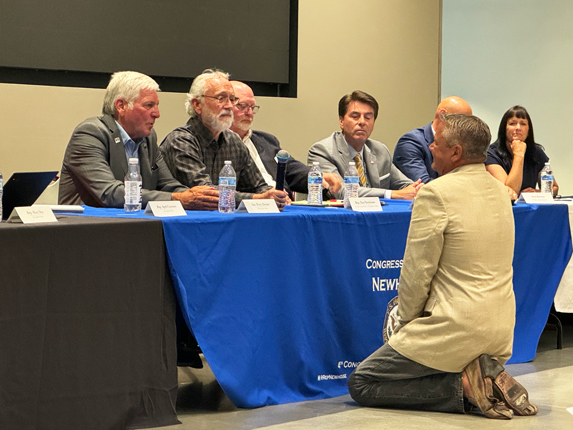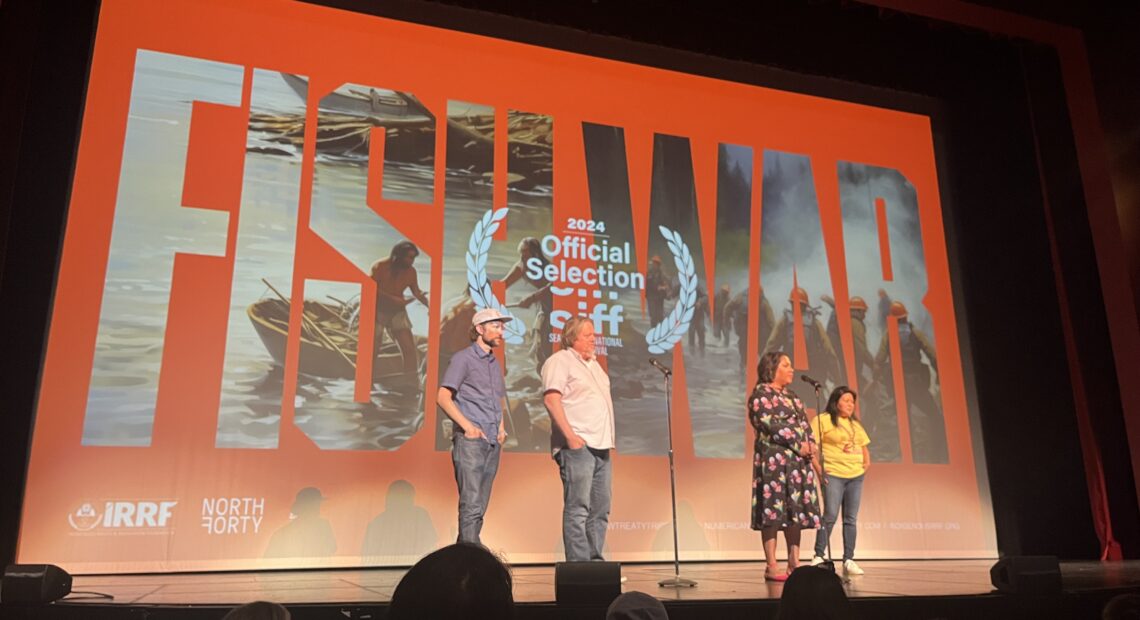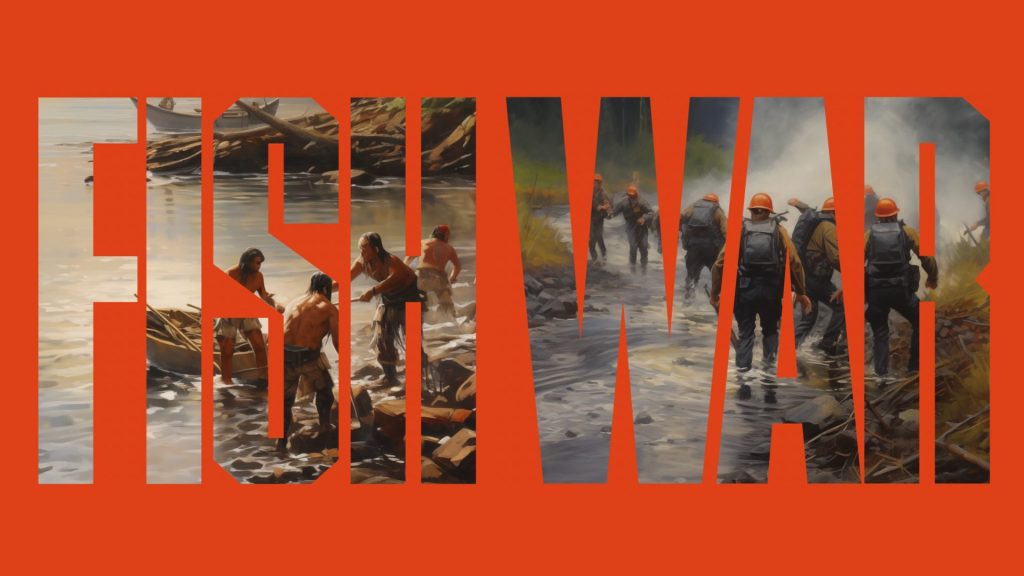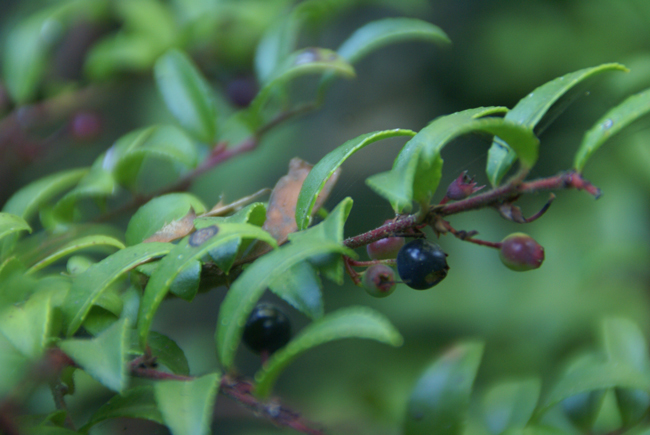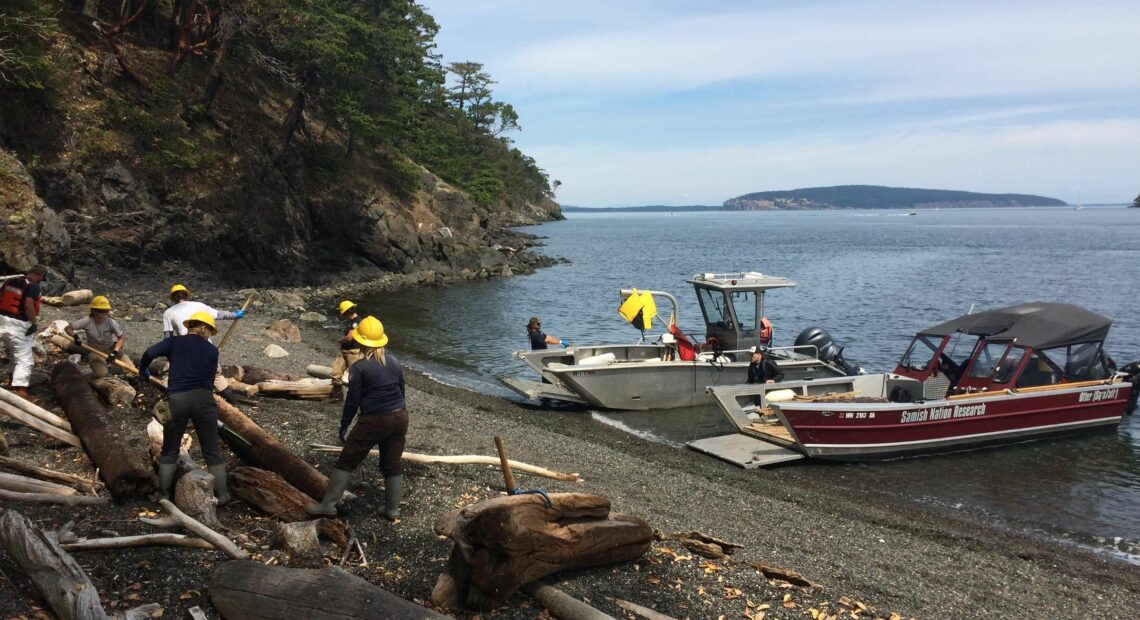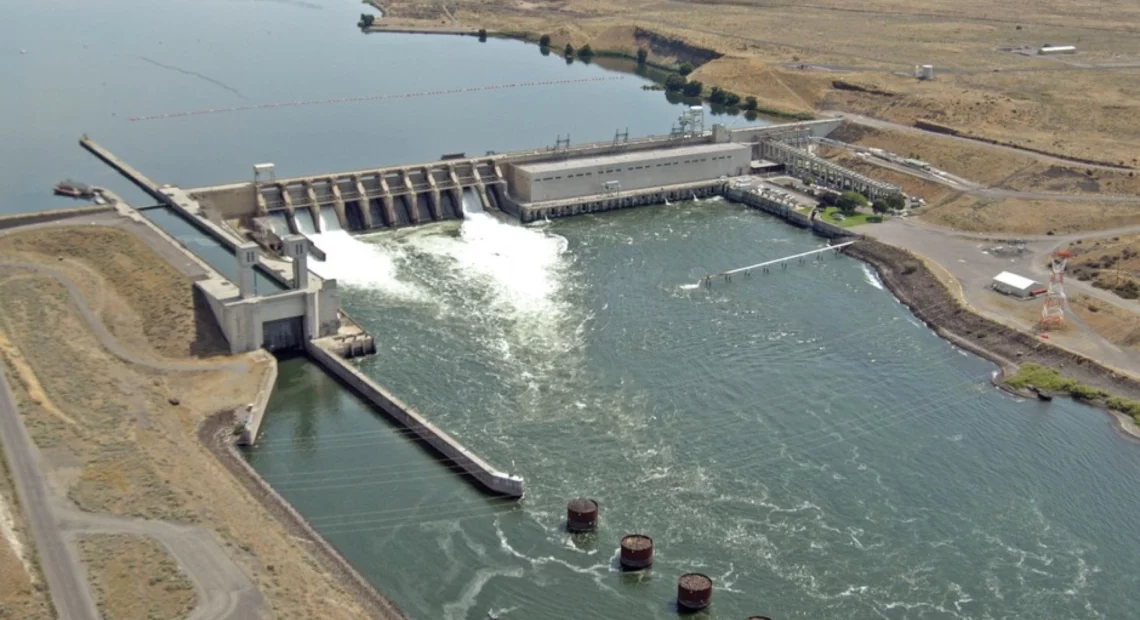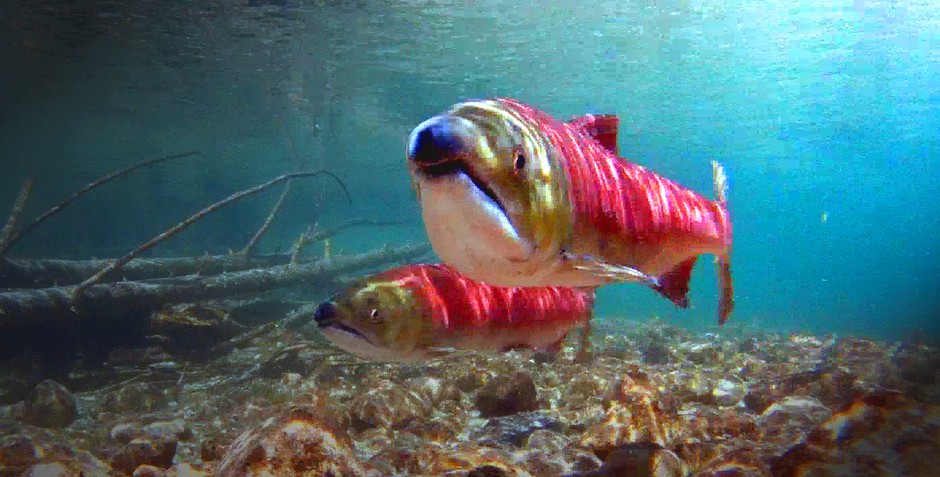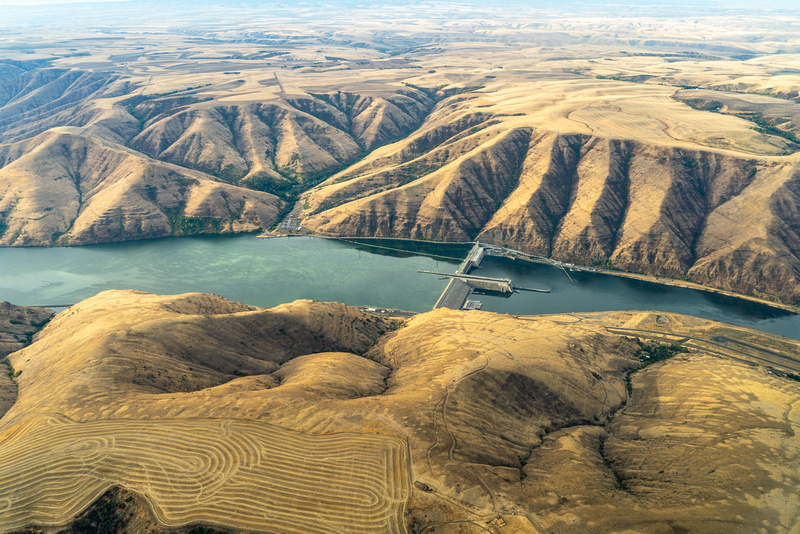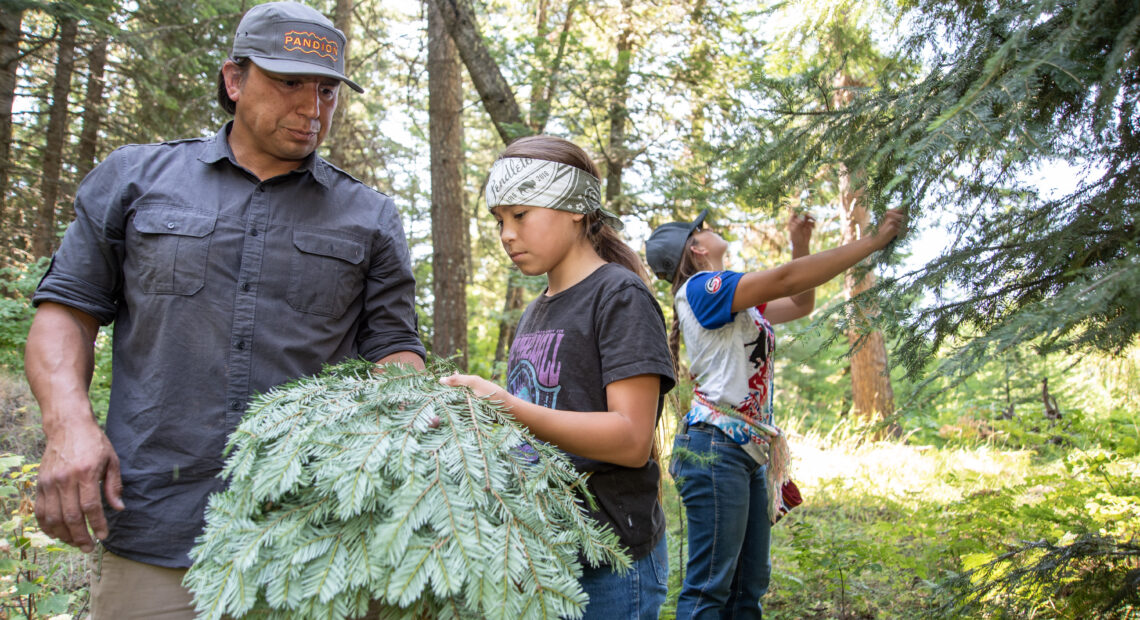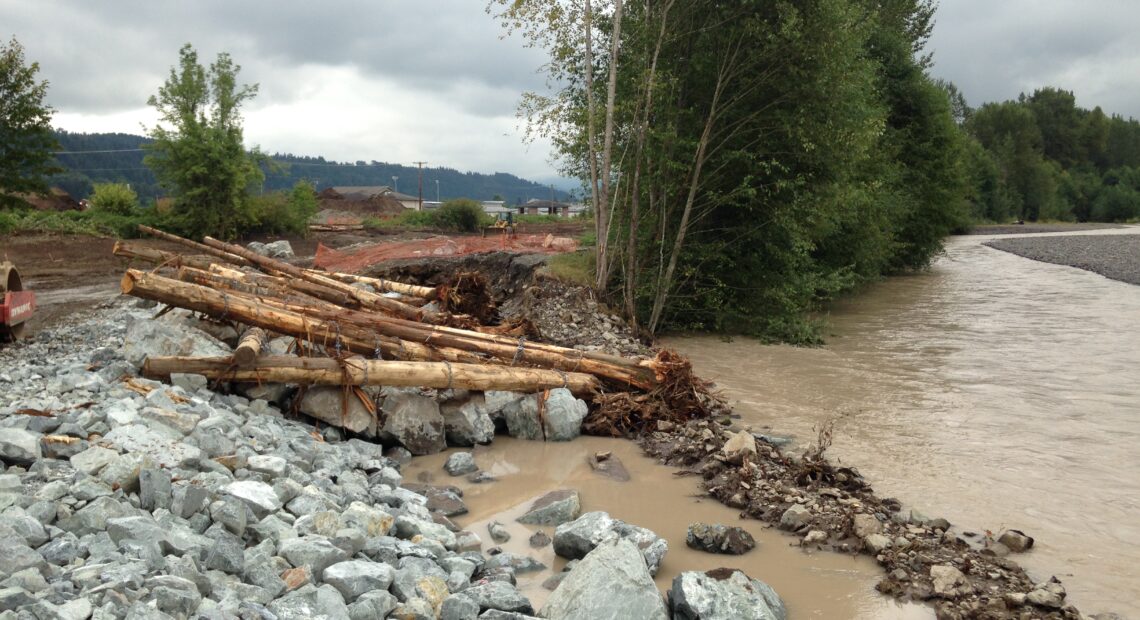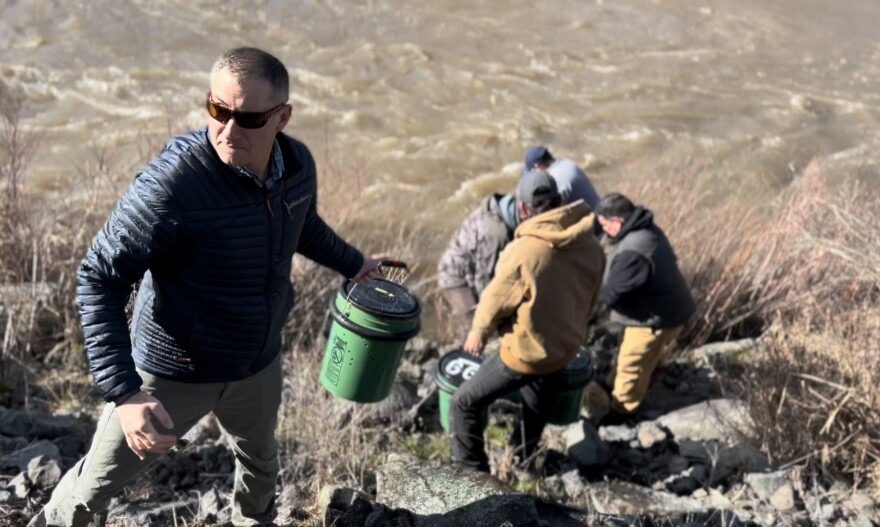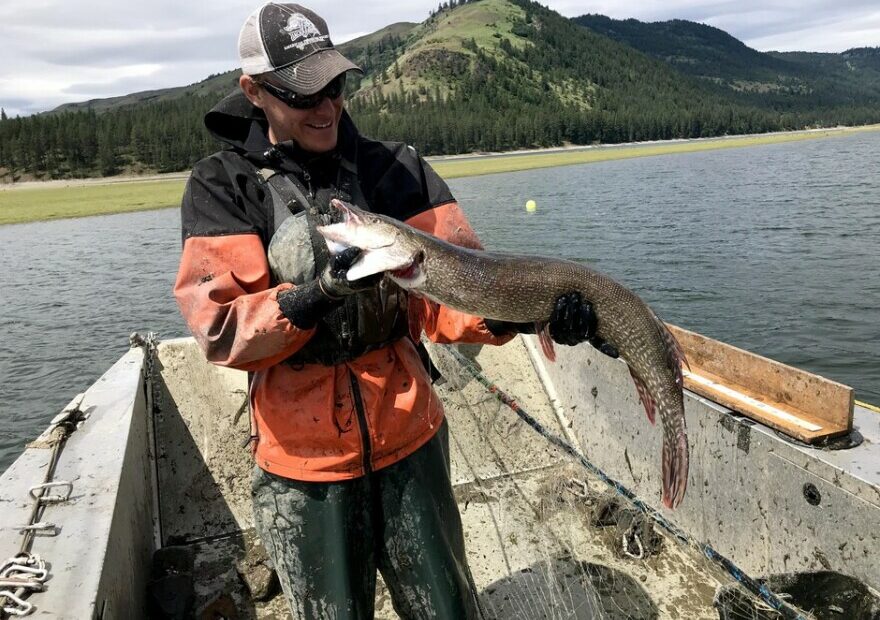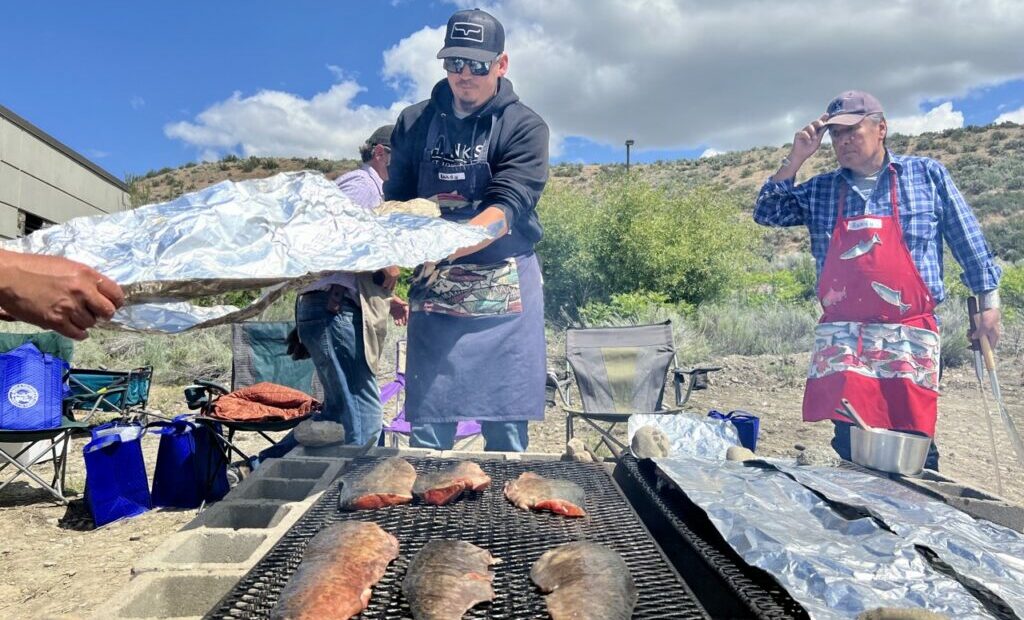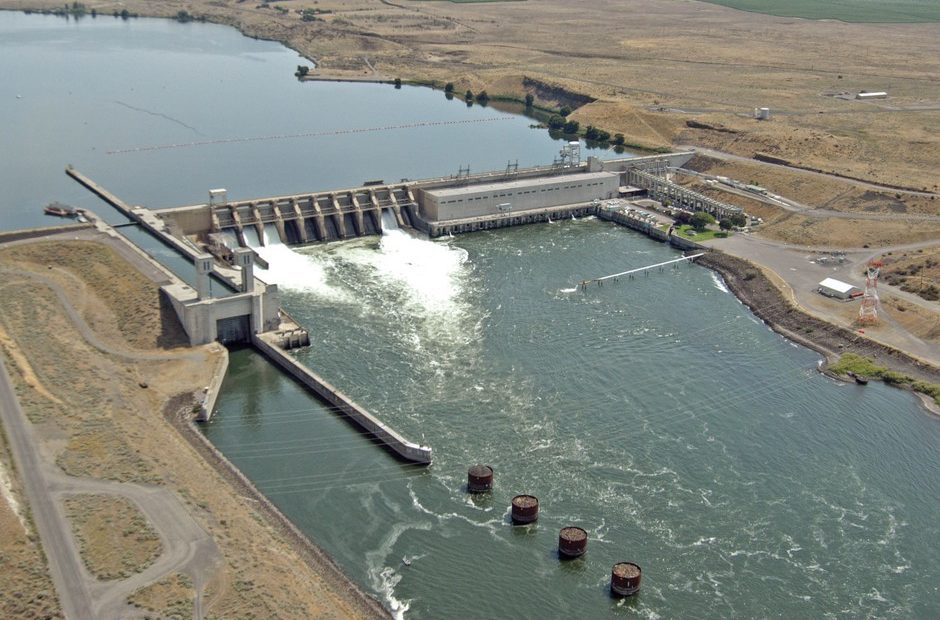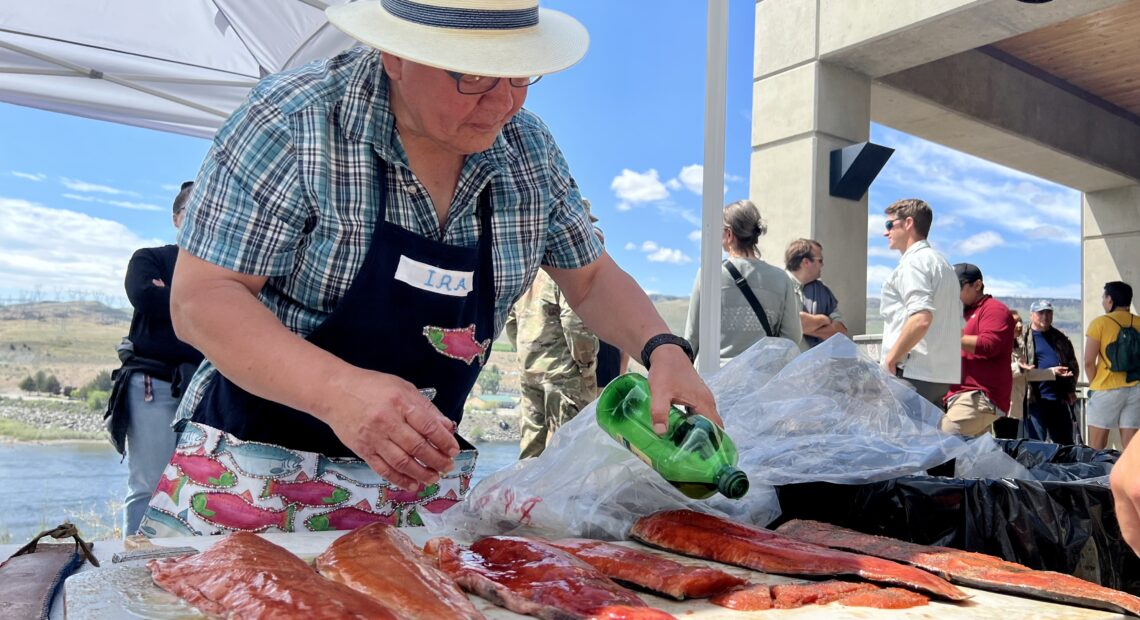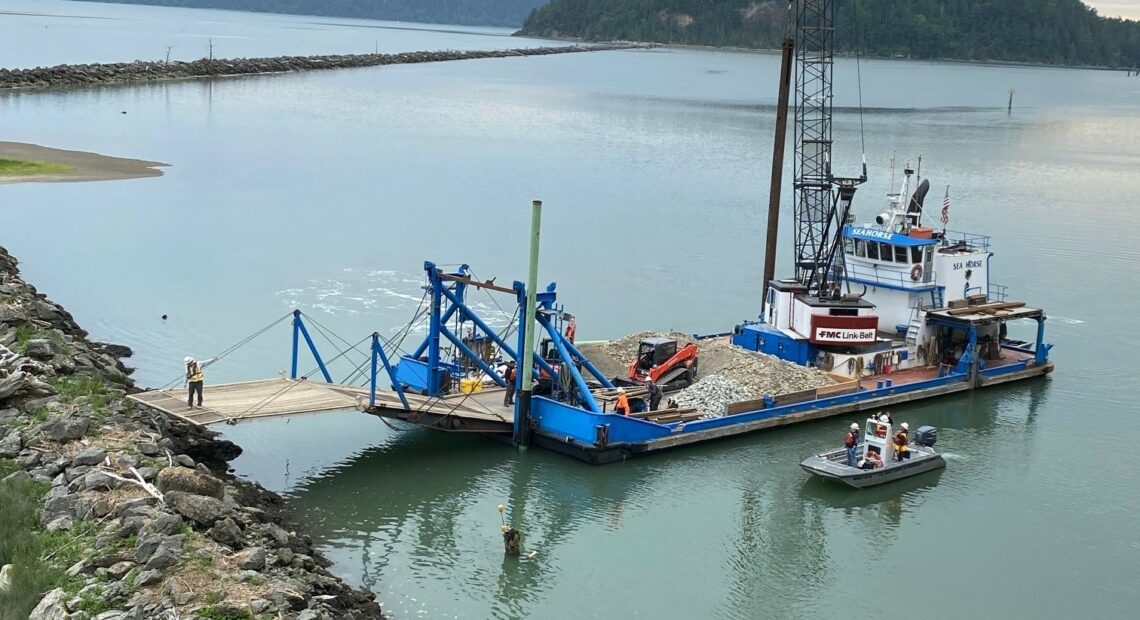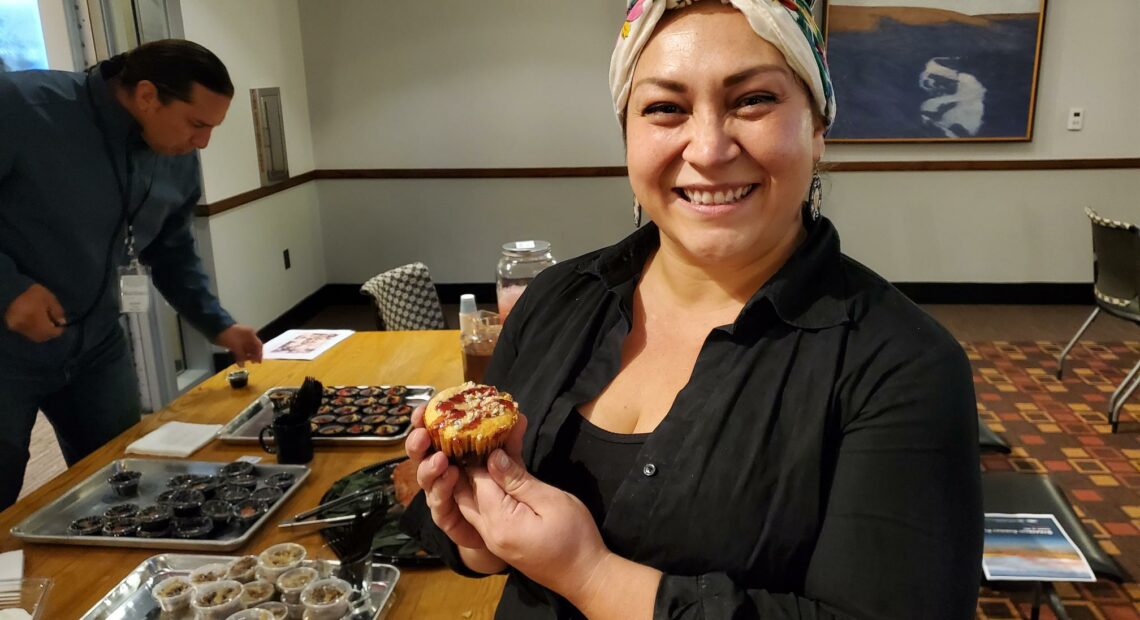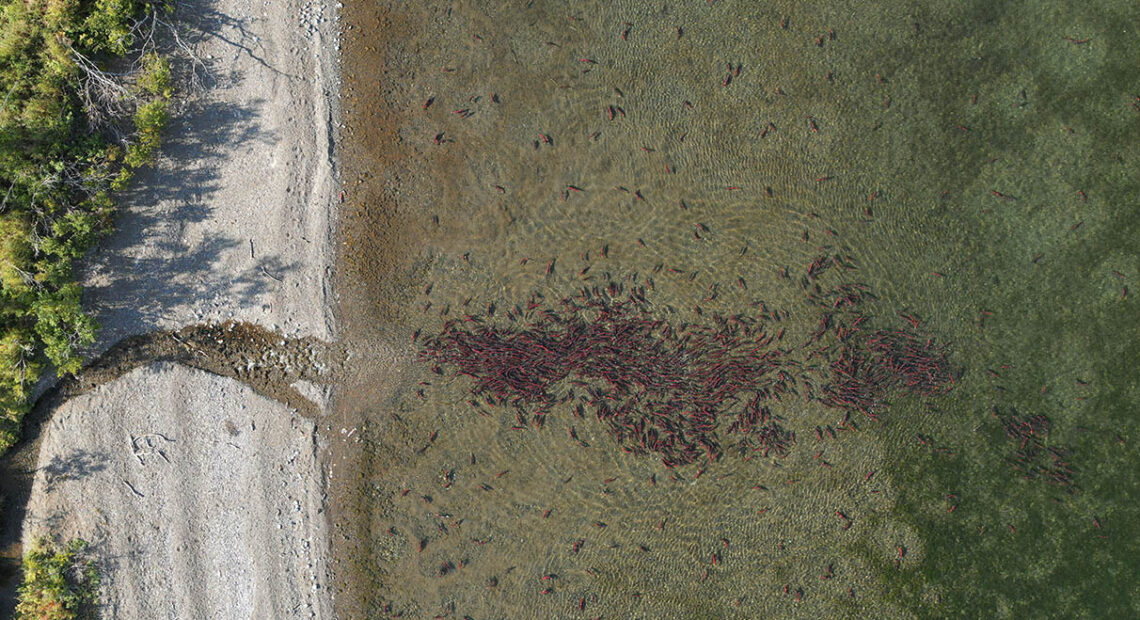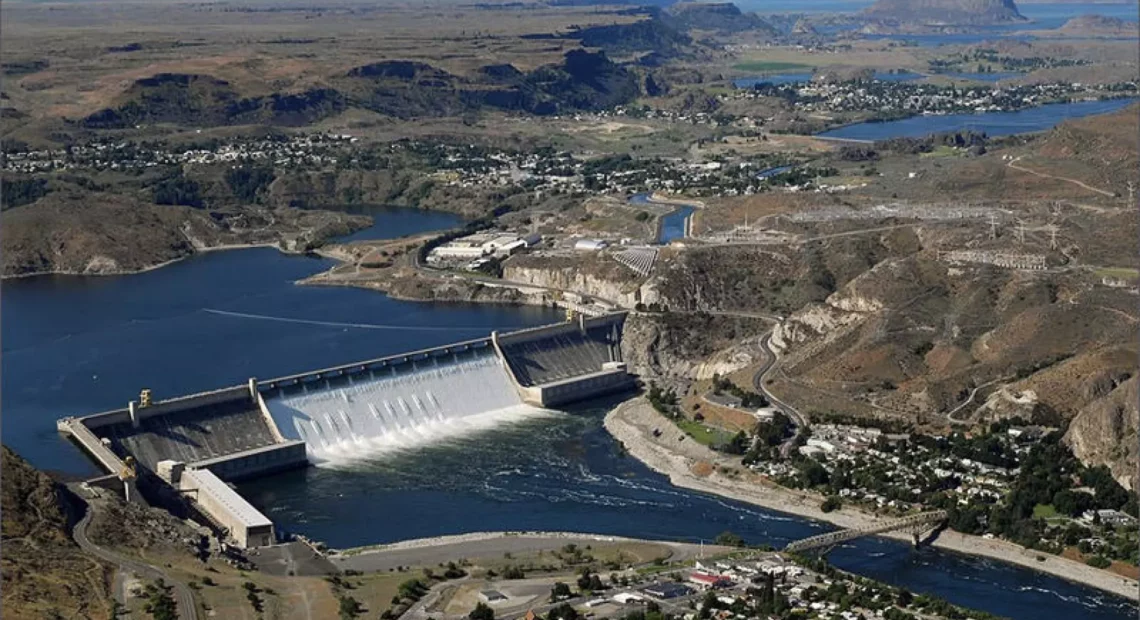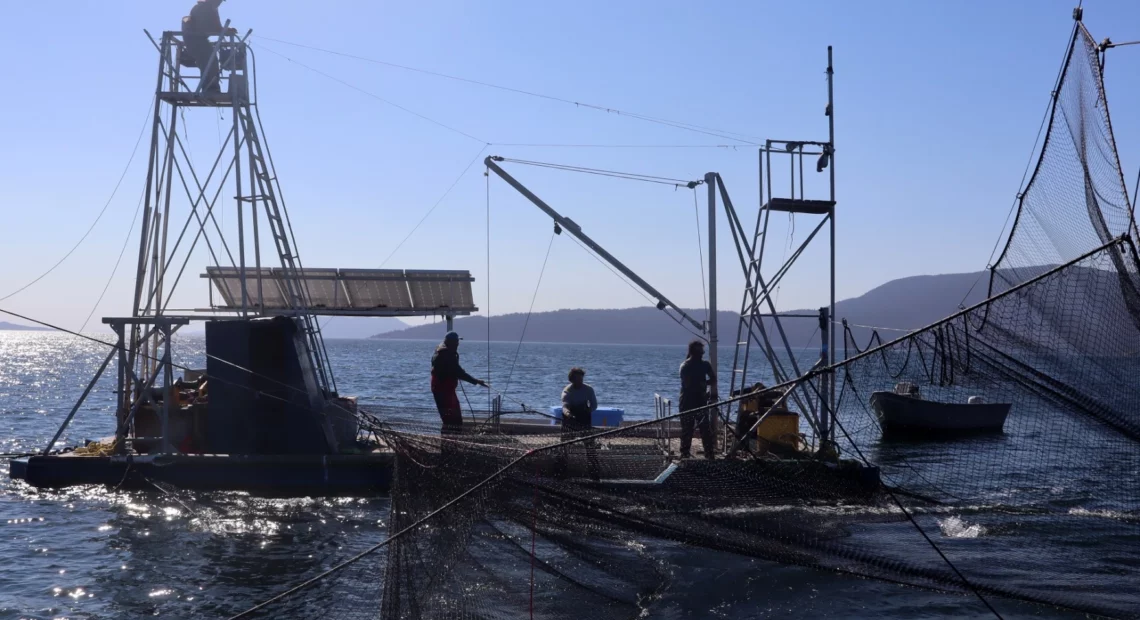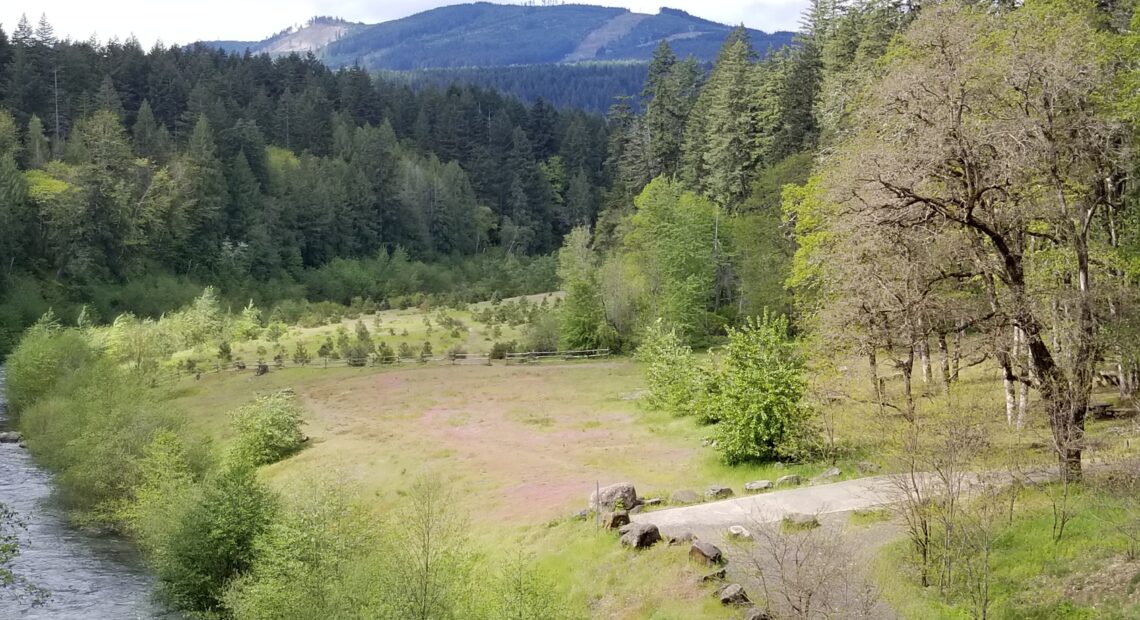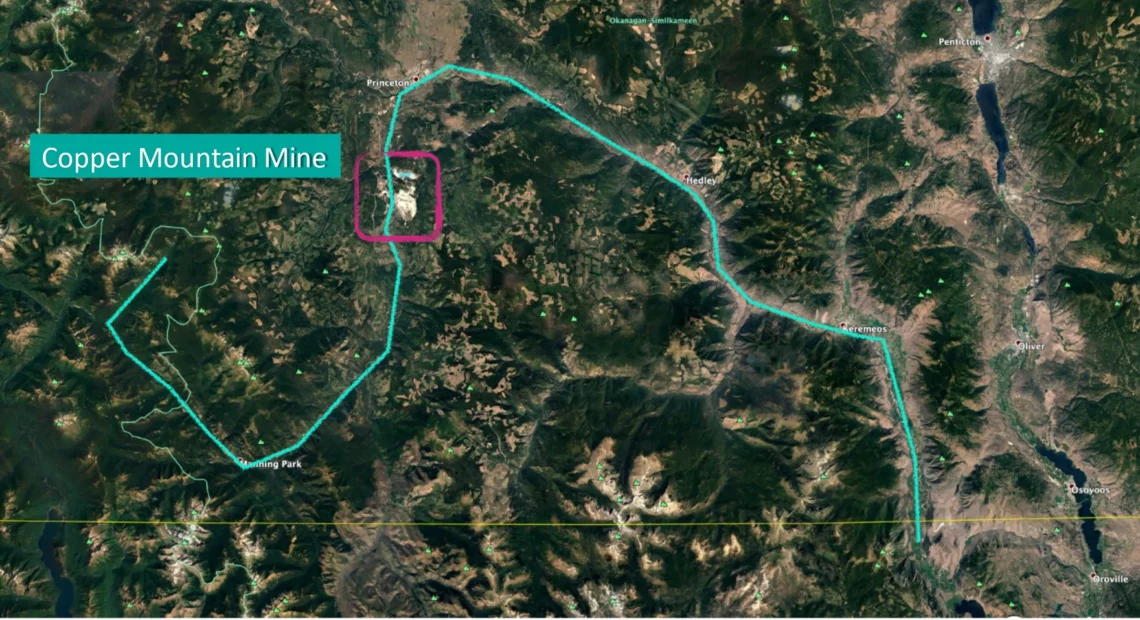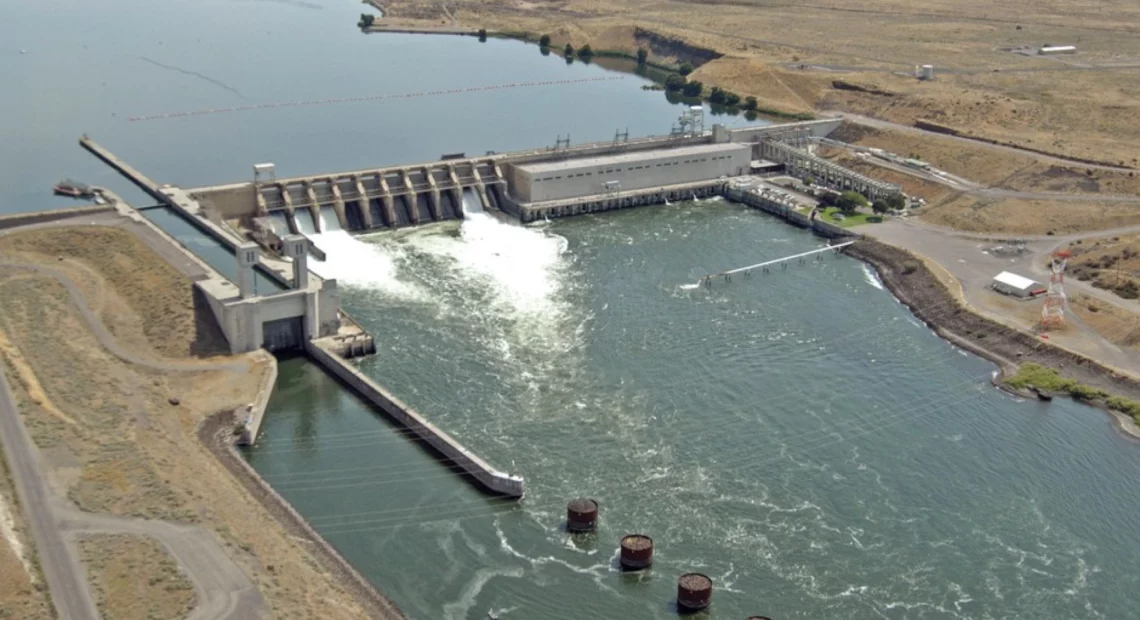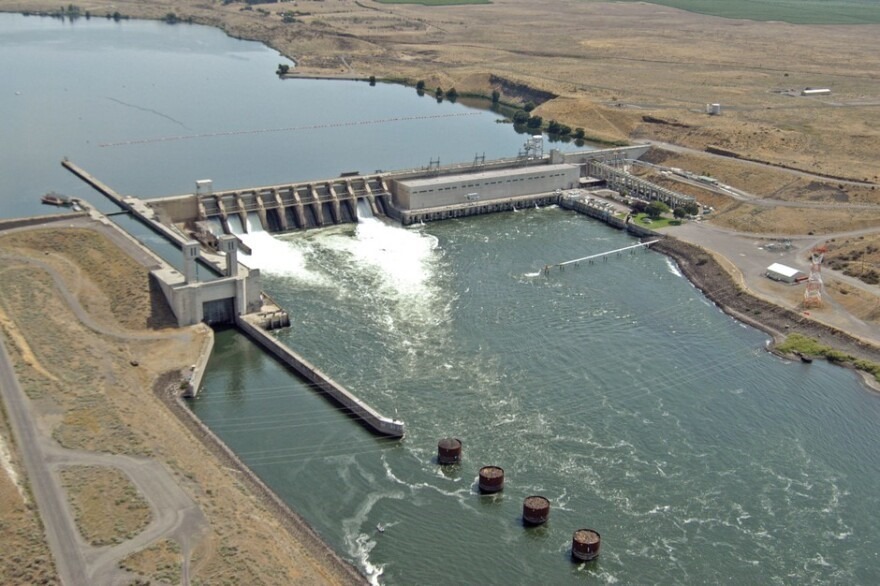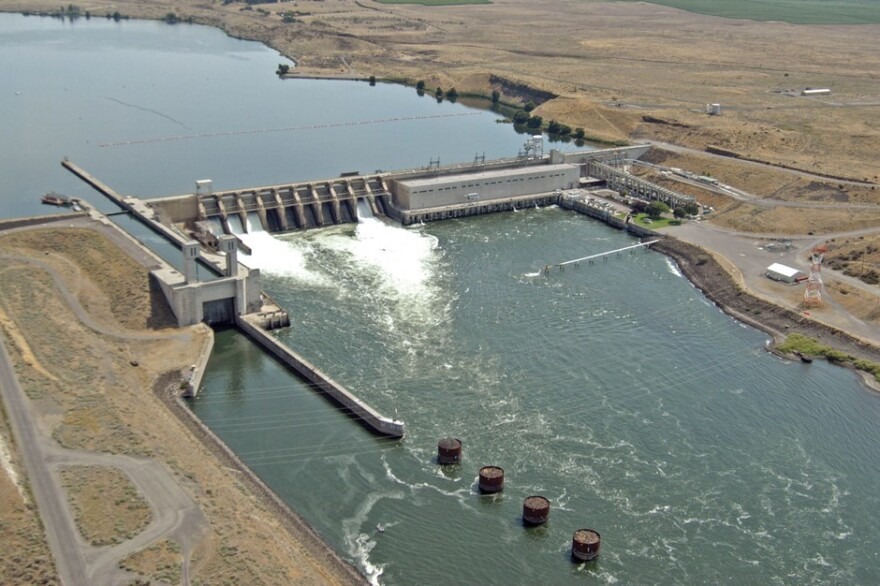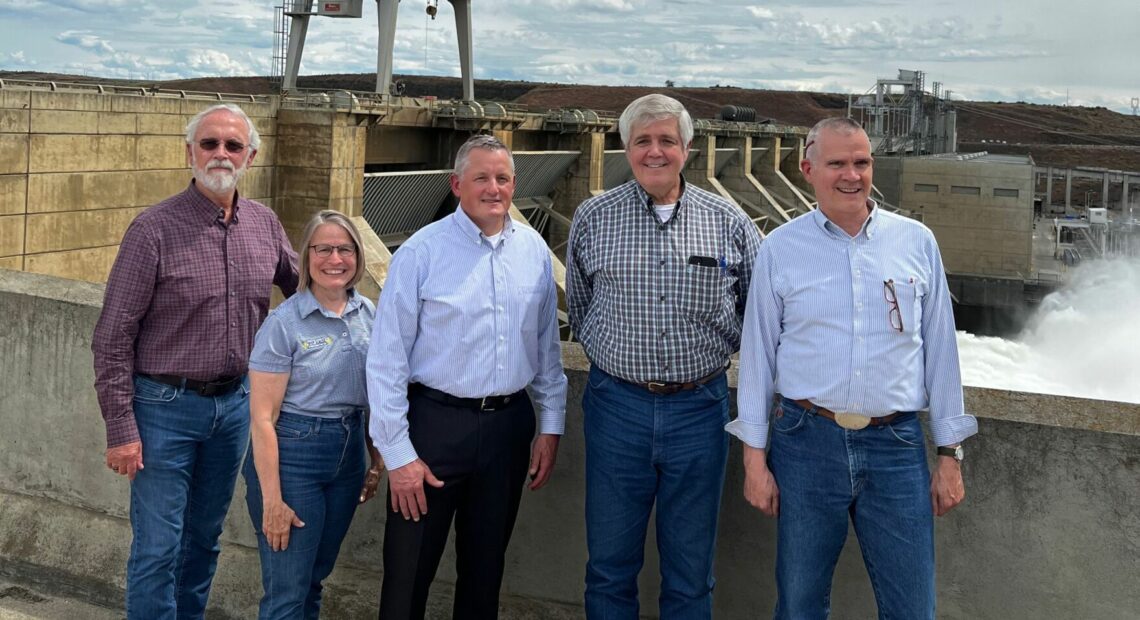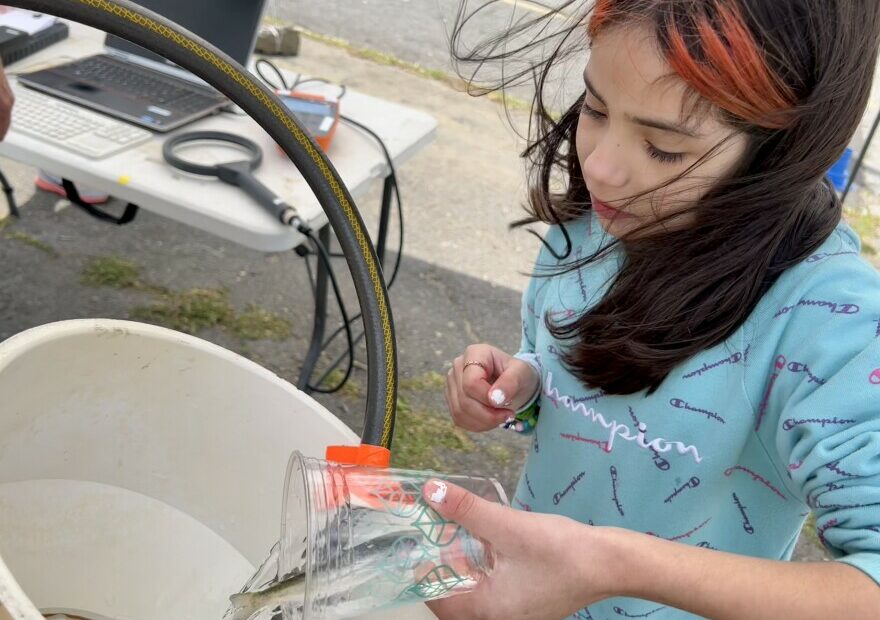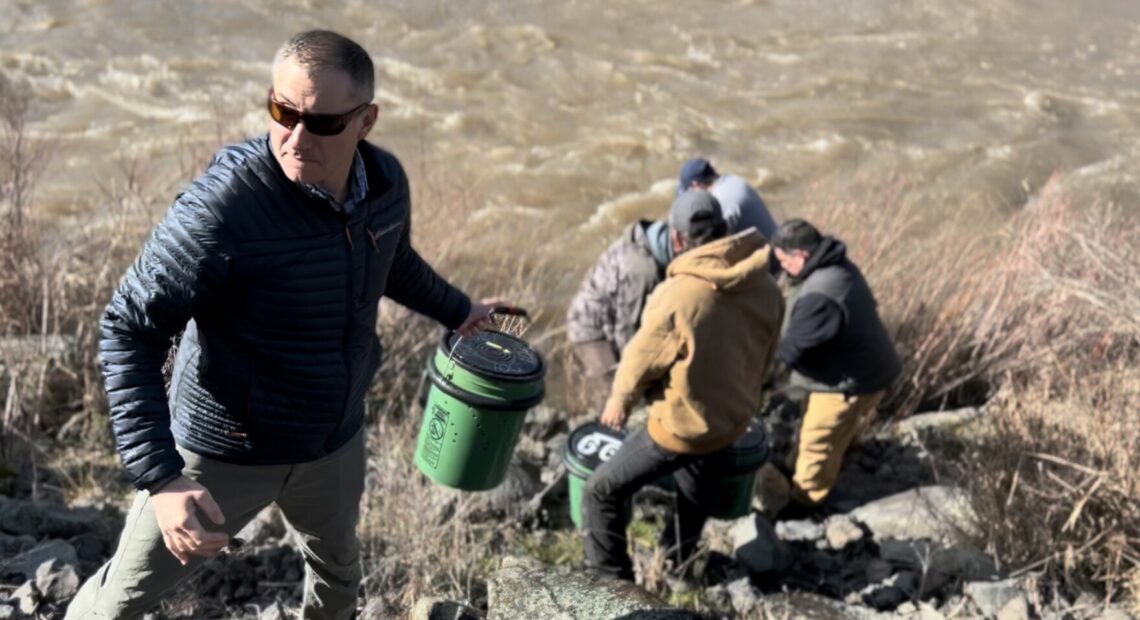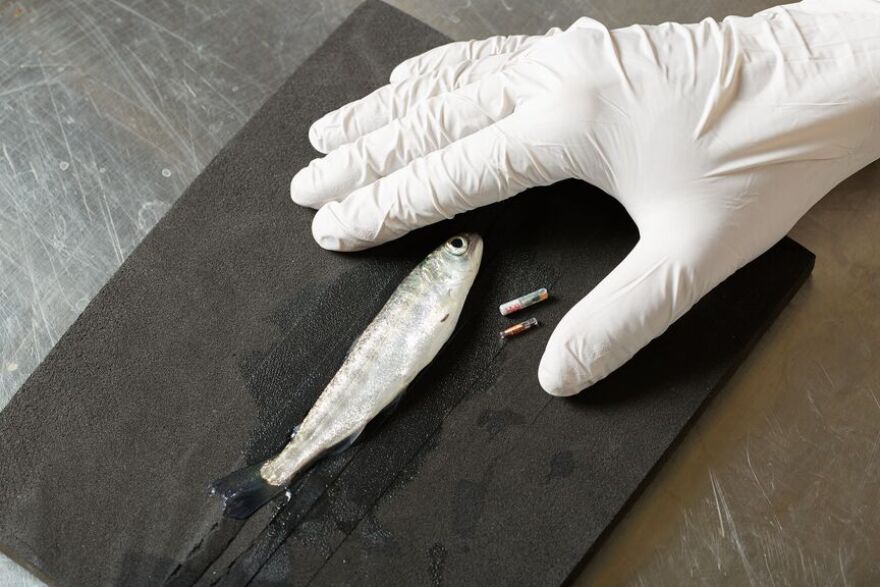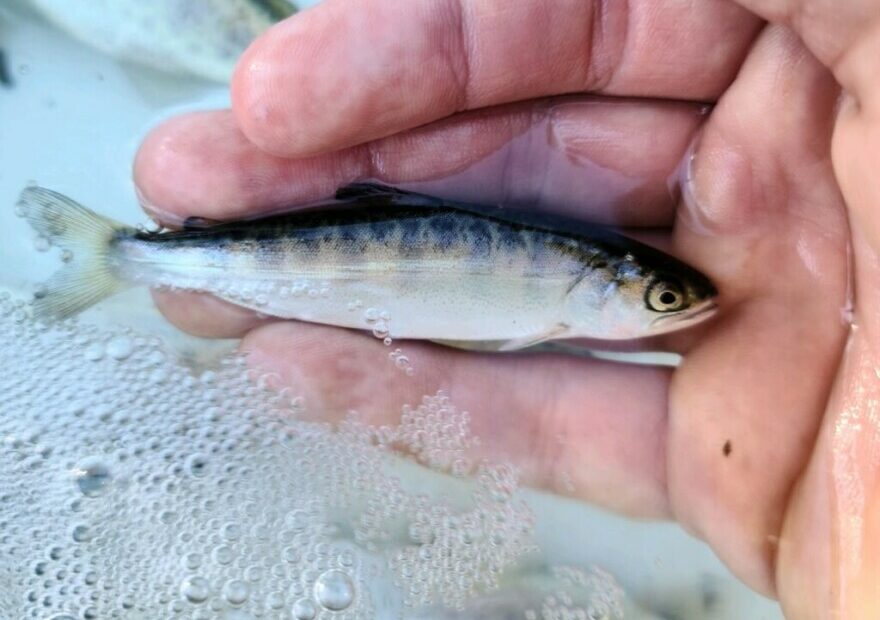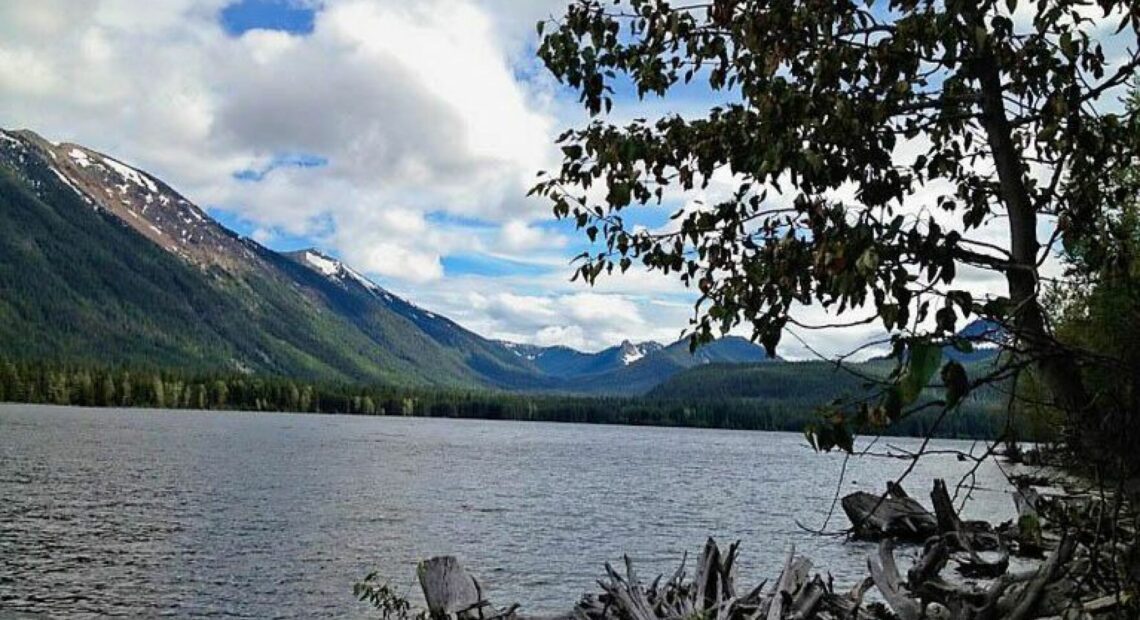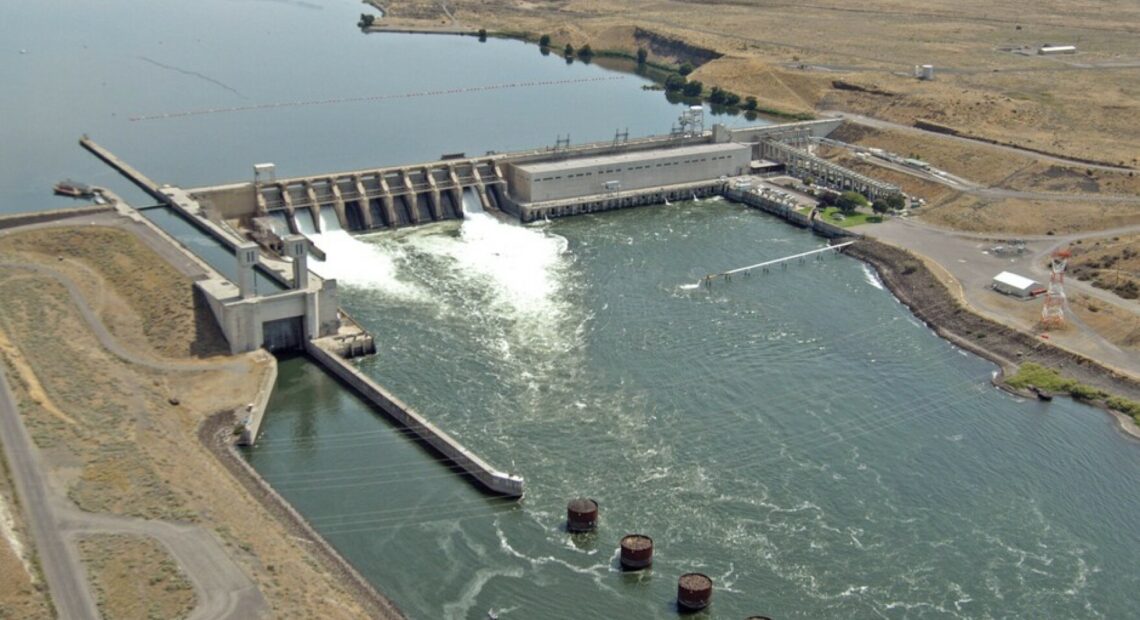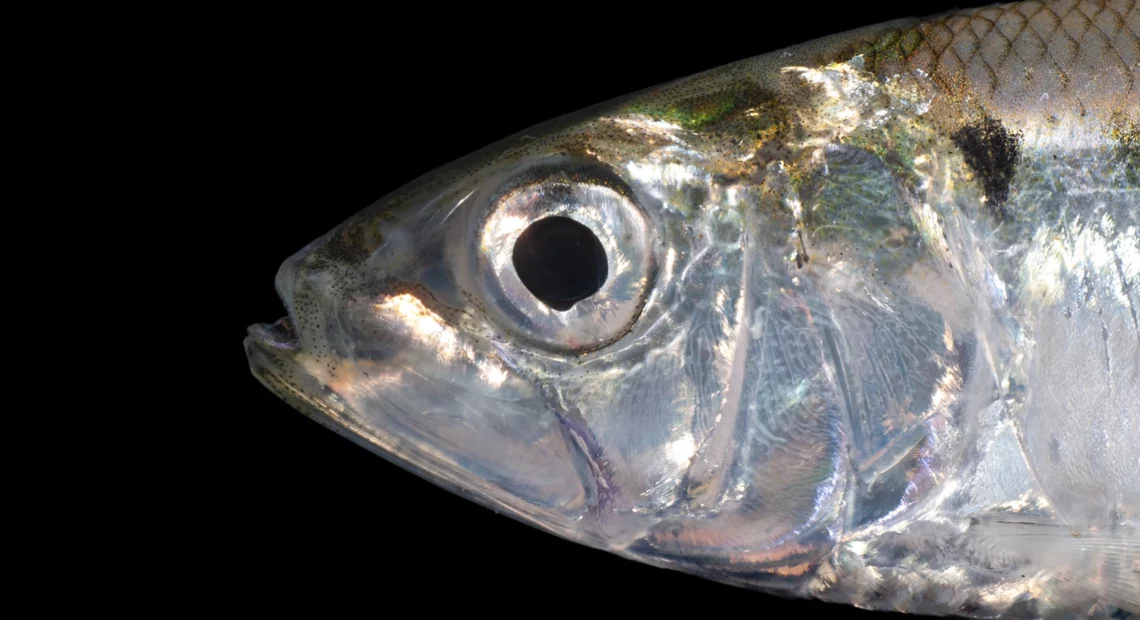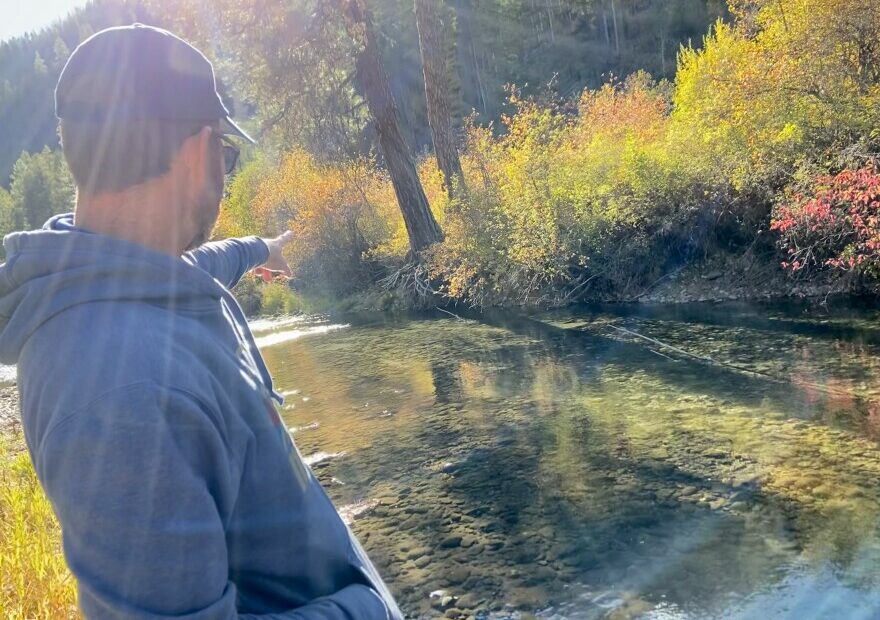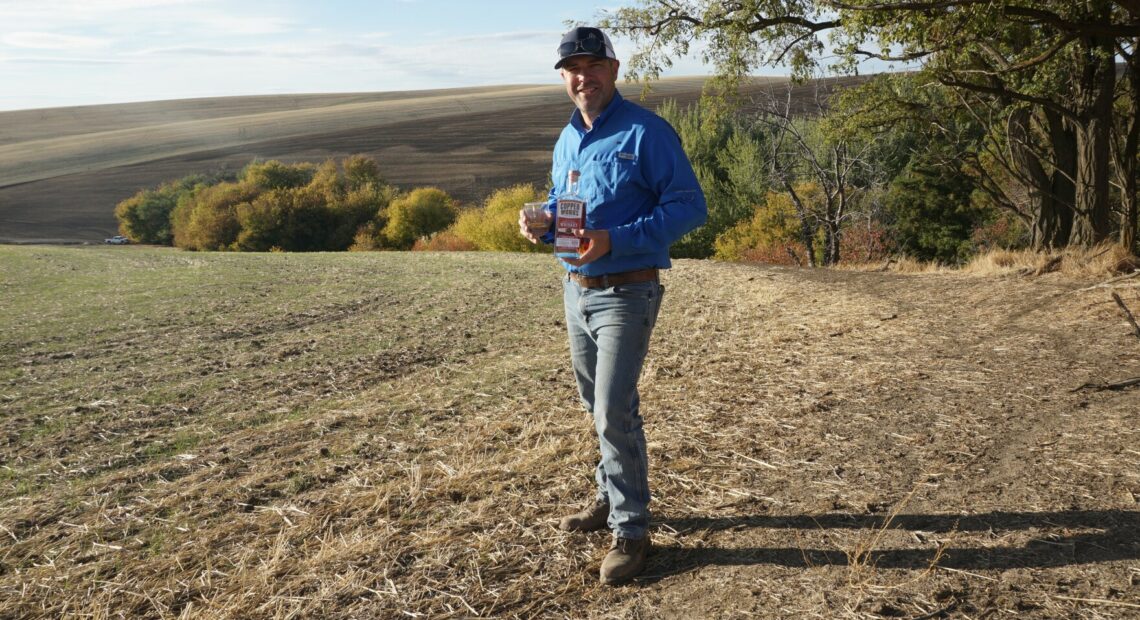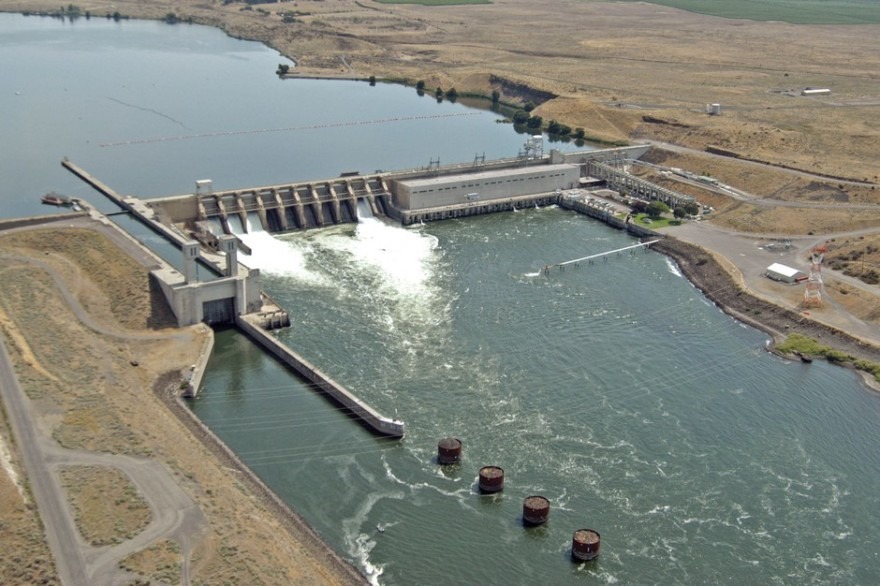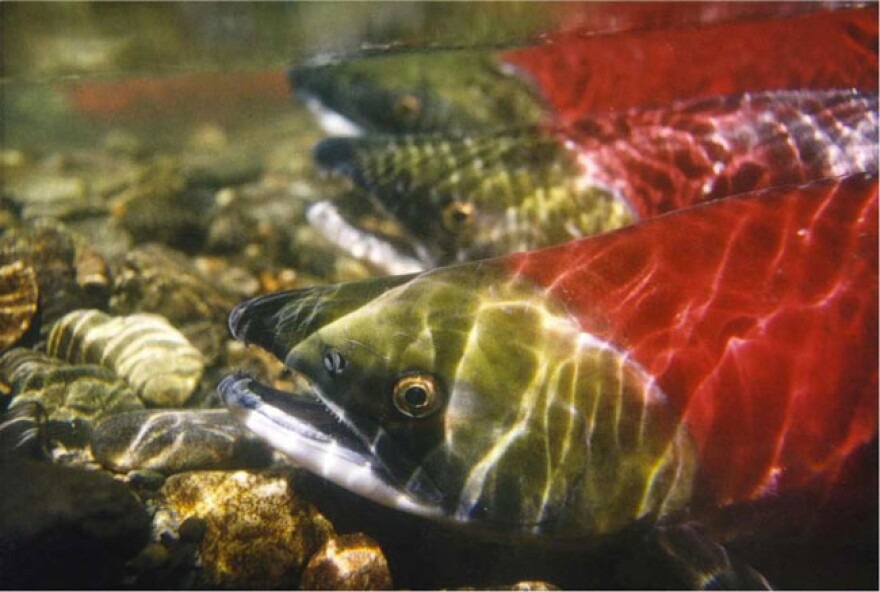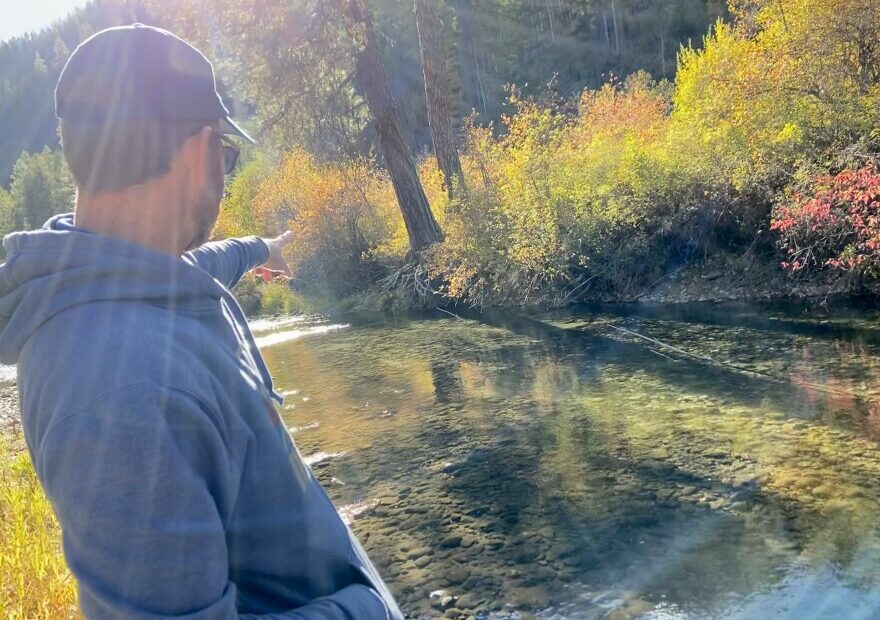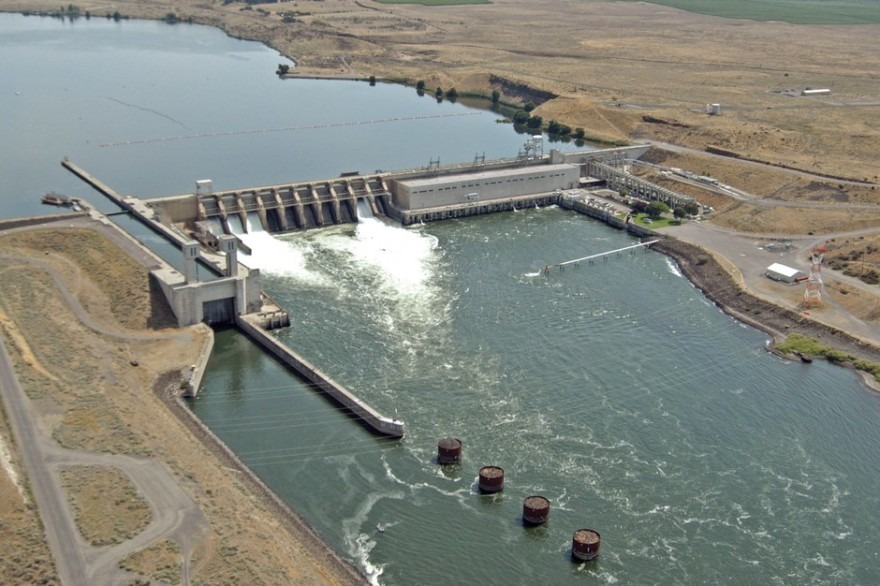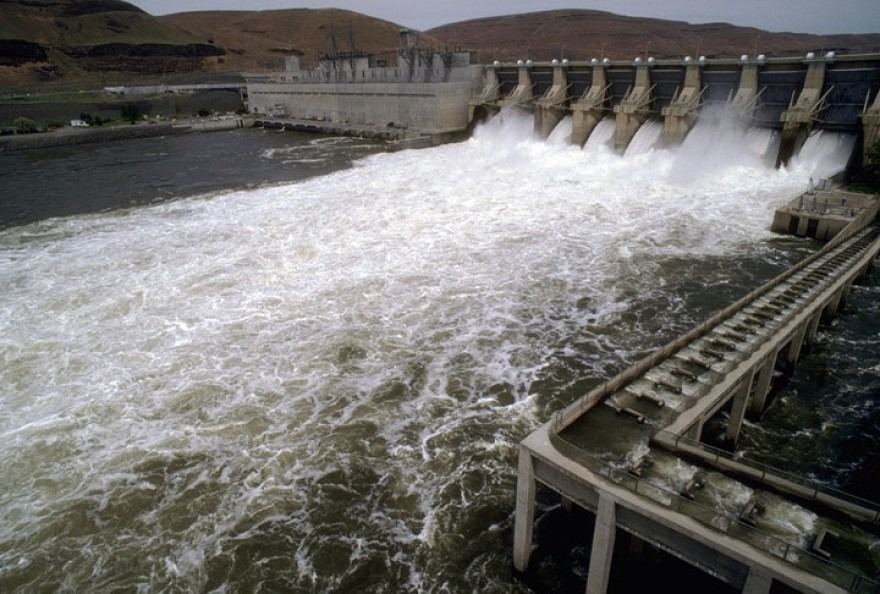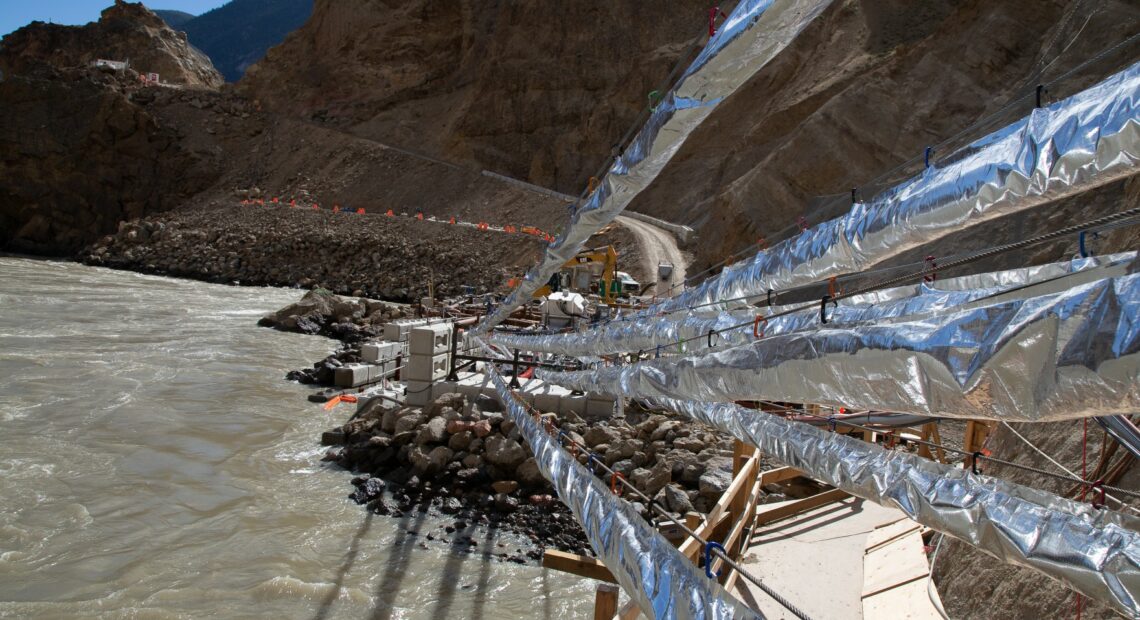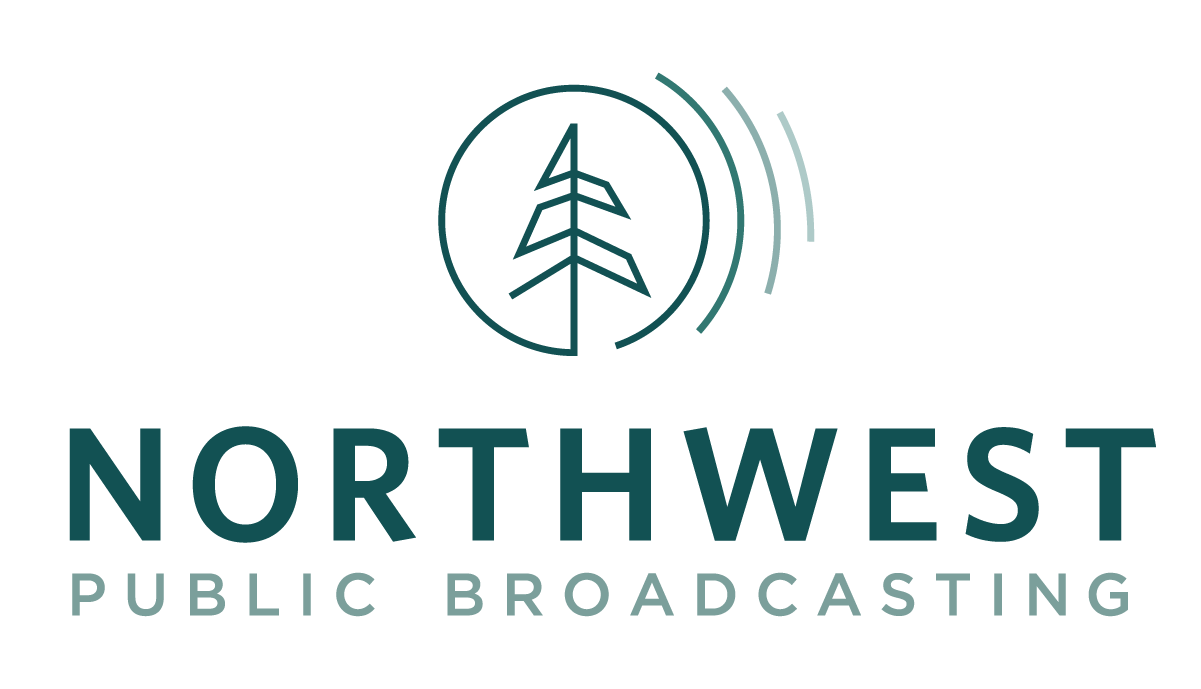At a Lower Snake River dams forum in the Tri-Cities, Chuck Bender, who said his family members are tugboat operators, fell to his knees in front of U.S. Rep. Dan […]Read More
From left to right, Charles Atkinson, Jeff Ostenson, Mary Big Bull-Lewis and Twa-le Abrahamson answer questions from the crowd after the film “Fish War.” (Credit: Reneé Dìaz / NWPB) Listen […]Read More
“Fish War” screens at the Numerica Performing Arts Center on Thursday. (Credit: North Forty Productions) Listen (Runtime 0:56) Read WENATCHEE— A documentary highlighting tribal leaders who stepped forward as environmental […]Read More
Huckleberries are considered a culturally important first food for some Northwest tribes. (Credit: David Baron / Flickr Creative Commons) Listen (Runtime 1:05) Read For the Nez Perce Tribe, connections to […]Read More
It’s that time of year when flowers are blooming, bees are buzzing, and crews working for the Samish Indian Nation are scouting shorelines within the San Juan archipelago, looking for marine debris. Read More
Ice Harbor Dam on the Snake River. Gov. Jay Inslee and U.S. Sen. Patty Murray said removing the four dams on the Lower Snake isn’t feasible right now. CREDIT: Bonneville […]Read More
Sockeye salmon like these are among the salmon species in peril. (Credit: Aaron Kunz) Listen (Runtime 2:57) Read For Northwest tribes, removing the four lower Snake River dams means more […]Read More
Lower Granite Dam on the Snake River. (Courtesy: EcoFlight) Listen (Runtime 1:34) Read For more than 40 years, Bruce Gordon has flown people over wild lands and wildlife habitats across […]Read More
Jeremy, Stella and Manaia Wolf, members of the Confederated Tribes of the Umatilla Indian Reservation, collect fresh fir boughs in the Rainwater Wildlife Area near Dayton, Wash. The fir boughs […]Read More
Washington Rep. Steve Tharinger of the 24th district became intimately acquainted with levee setbacks when he discovered the levee protecting his house on the lower Dungeness River was not only not protecting his house, but harming the ecosystem too.
“I sold my house and the five acres in a barn we had, so that we'd have more room to move that levee back and give the Read More
Sockeye salmon like these are among the salmon species in peril. Credit: Aaron Kunz Listen (Runtime 1:05) Read By Courtney Flatt and Tony Schick President Biden today directed federal agencies […]Read More
A line of about a dozen people passed buckets of summer chinook salmon to be released into Hangman Creek. (Credit: Courtney Flatt) Listen (Runtime 1:05) Read In a historic agreement, […]Read More
Biologists are catching as many northern pike as they can in Lake Roosevelt, the reservoir held back by the Grand Coulee Dam. CREDIT: Courtney Flatt Listen (Runtime 0:54) Read Right […]Read More
El sol apenas comenzaba a salir sobre el río Columbia en Bridgeport, Washington, cuando un pescador Colville capturó el primer salmón de la temporada.Read More
The Ice Harbor Dam on the Snake River. CREDIT: BPA Listen (Runtime 1:02) Read At a Congressional hearing in Richland, Wash., designed to defend the four Lower Snake River dams […]Read More
Ira Stevenson preps salmon filets for the salmon bake after a First Salmon ceremony at Chief Joseph dam in north central Washington. (Credit: Courtney Flatt.) Listen (Runtime 4:04) Read The […]Read More
The Army Corps of Engineers began emergency repair work May 22 on a jetty that sits at the mouth of the Skagit River’s North Fork, near La Conner.
Crews will use cobble and sediment to essentially plug porous areas of the McGlinn Island Jetty. Those gaps have stranded, harmed or killed out-migrating juvenile salmon this spring, according to a press release from the Read More
Northwest artists have drawn inspiration from salmon as long as people have walked along the running streams. But, the movement to close four dams on the lower Snake River has some artists, activists and naturalists hopeful that their pieces will not only tug at heartstrings, but also move forward the conversation of salmon conservation and restoration.
Washington Gov. Read More
House Energy and Commerce Committee Chair Cathy McMorris Rodgers, R-Wash., leads the panel during an organizational meeting for the 118th Congress, at the Capitol in Washington, Tuesday, Jan. 31, 2023. […]Read More
Sadie Mildenberger holding Elderberry Crumble muffins. CREDIT: Dori Luzzo Gilmour Listen (Runtime 4:06) Read Forty years ago, the Confederated Tribes of the Umatilla Indian Reservation’s Department of Natural Resources started […]Read More
A drone image of salmon during spawning season in Alaska. CREDIT: Daniel Auerbach LISTEN READ Searching for the places where salmon lay eggs, known as redds, is getting a boost […]Read More
Salmon advocates want negotiators to consider salmon and the Columbia River’s ecosystem as a part of an agreement between the U.S. and Canada.Read More
Only 12 commercial fishing captains still hold permits to go reefnet fishing in the Pacific Northwest out of a fleet that once numbered in the hundreds. The distinctive fishing technique dates back thousands of years as an Indigenous method to catch salmon. Its practitioners today say the gear should proliferate as the preferred way to harvest healthy salmon runs while Read More
Vegetation Returns Yakama Nations Fishieries Listen (Runtime :56) Read 11 years ago, the Condit Dam was removed and this year the Yakama Nation will celebrate the anniversary of the return […]Read More
Breaching the Snake River dams is one major way to protect salmon, according to a final federal report announced Friday on salmon and steelhead recovery in the Columbia River Basin.Read More
Listen (Runtime 1:18) Read The Yakama Nation hosted an event at the confluence of the Yakima and Columbia rivers in Richland to celebrate Tribal heritage and culture. The event also […]Read More
If two British Columbia tailings dams fail, it could spell disaster, according to two reports that analyzed the chances of the dams failing.Read More
A much-awaited report said removing the four Lower Snake River dams shouldn't happen right now, but dam removal is the best way to protect Snake River salmon.Read More
To recover healthy salmon populations, one or more of the Snake River dams must be breached, in addition to other actions, according to a new draft report released Tuesday by federal officials.Read More
Breaching the dams would be the best way to remove Snake River salmon runs from the Endangered Species List and the best way to maintain treaty and trust obligations with tribes, according to the report. It could cost from $10.3 billion to $27.2 billion.Read More
Four members of the U.S. Congress recently got a close look at Washington’s Snake River dams.Read More
The young daughter of Anessia Scott interacts with the traveling totem. Anessia, who is a descendant of the Nez Perce and Blackfoot tribes, says she wants her daughter to learn […]Read More
A recent salmon field trip has helped students become more curious about salmon.Read More
Bringing salmon back to the Upper Columbia River will take a lot of time and a lot of money, according to the Upper Columbia United Tribes.Read More
A line of people pass buckets of summer chinook salmon to be released into Hangman Creek Read Courtney Flatt/Northwest News NetworkCoeur d’ Alene tribal members Bobbie White (left) and Vince […]Read More
Researchers at PNNL tag young chinook salmon with tags slightly larger than a grain of rice Listen: Northwest News Network’s Courtney Flatt reports on data released that tracks fish and […]Read More
Fish swimming out to sea over the past year have lucked into some of the best water temperatures and food abundance along the West Coast in the last 24 years, according to an analysis from the National Oceanic and Atmospheric Administration began monitoring ocean conditions.Read More
Climate change is forcing creative water storage options in the Yakima River Basin to ensure enough water for fish, cities and farmers. Read More
Two surveys about breaching the Snake River dams show opposing results.Read More
Columbia River fish could have another challenge to their ecosystem. Growing numbers of American shad could challenge salmon and steelhead.Read More
Soon, it could be easier to track young sockeye salmon around dams.Read More
Upper Columbia tribes want help to continue reintroducing salmon above Grand Coulee Dam.Read More
Whiskey isn’t just for drinking anymore. A new craft whiskey is turning the old saying: “Whiskey is for drinking. Water is for fighting,” on its head. This whiskey is fighting to save salmon.Read More
Nez Perce Tribe install Tesla Megapack for soloar power at wastewater facility. Read More
Washington Sen. Patty Murray and Gov. Jay Inslee said they'll listen to diverse viewpoints with open minds to recover salmon and potentially breach the four Lower Snake River dams.Read More
A longstanding court battle over the federal government’s plan to manage dams on the Snake and Columbia rivers could be on hold until next summer.Read More
Salmon are now spawning in waters blocked by Grand Coulee Dam. It's the start of a larger effort to reintroduce salmon into the blocked area. Read More
A new poll supported by environmental groups found Washington voters West and East of the Cascades support dam removal.Read More
Federal regulators starting this spring will require dam operators to limit hot water pollution caused by the four Lower Snake River dams.Read More
Whoosh Innovations said its fish passage system could transport salmon quickly over the Snake River dams – and generate $60 million over 10 years by diverting water from fish ladders to hydropower turbines.Read More

